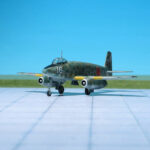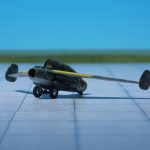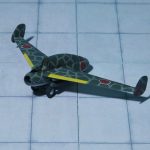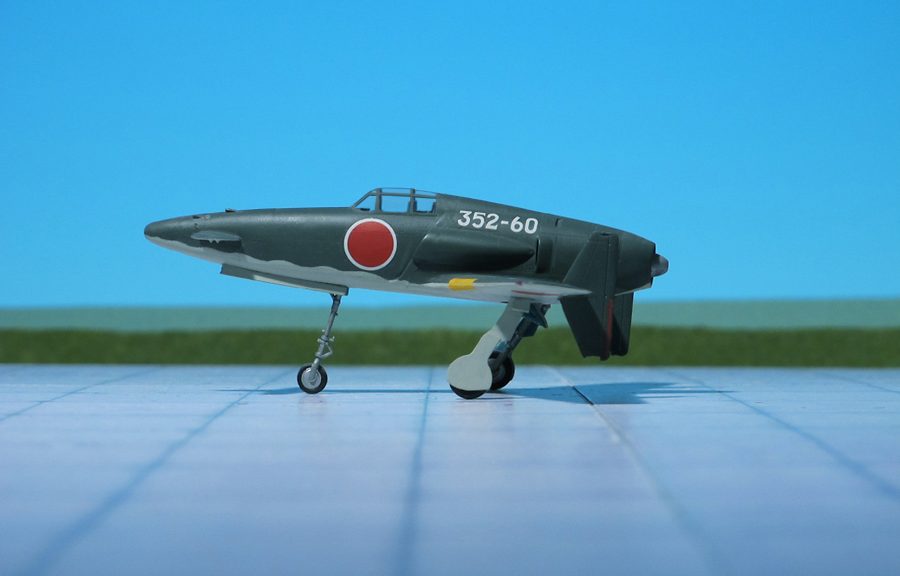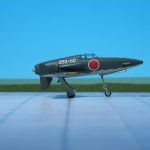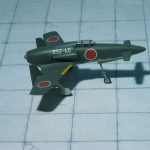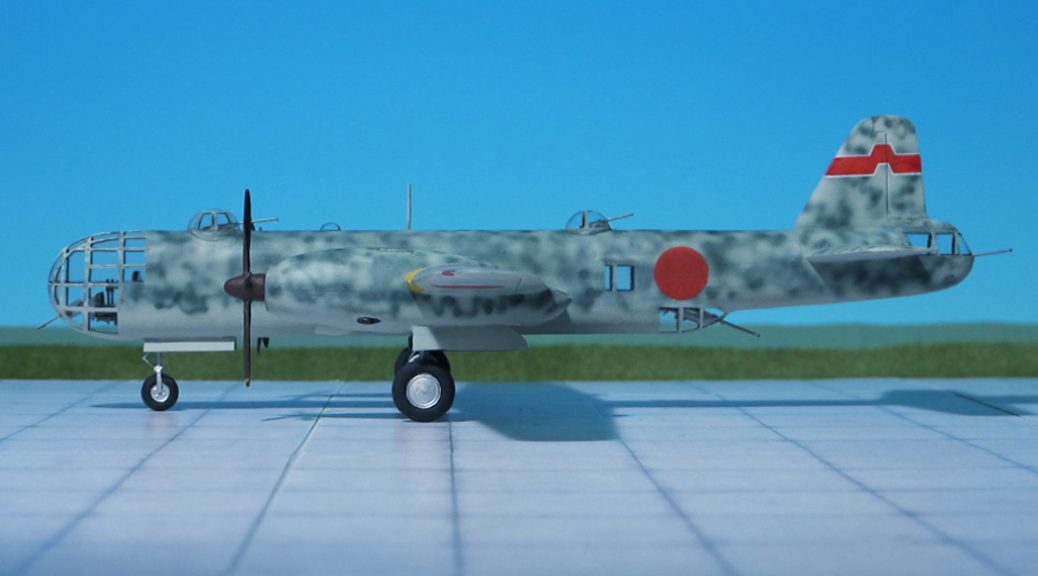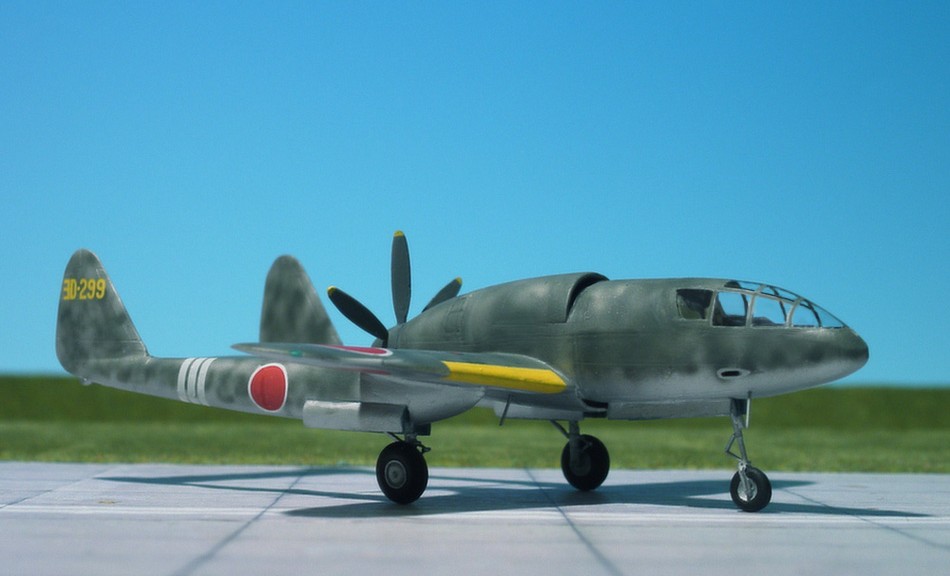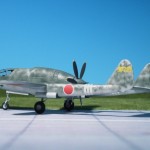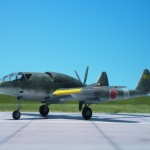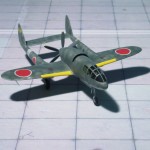TYPE: Fast attack bomber
ACCOMMODATION: Crew of two
POWER PLANT: Two Mitsubishi Ne 330 axial-flow turbojet engines, rated at 1,320 kp each
PERFORMANCE: 495 mph (estimated)
COMMENT: In late 1944, Kugisho (a WW II acronym for Dai-Ichi Kaigun Koku Gijitsusho, First Naval Air Technical Arsenal. Kugisho was based at Yokosuka, hence the type is often incorrectly designated Yokosuka) approached the Imperial Japanese Navy (IJN) and informed them that the Yokosuka R2Y1 Keiun‘s airframe was readily adaptable to other roles, including that of a fast attack bomber. To heighten the interest, it was proposed that the Ha-70 10 engine be replaced with two Mitsubishi Ne330 axial flow turbojets, each of the engines being slung under the wings in nacelles. The fuselage space vacated by the Aichi engine would be replaced with fuel tanks. For weapons, the aircraft would carry one 1,800kg bomb and have a cannon armament in the nose. With the introduction of the Ne330 engines, the maximum speed was expected to be 495mph, superior to the projected 447 mph top speed of the Aichi engine model. With these advantages in mind, the IJN approved that work should begin on designing the R2Y2, the turbojet powered “Keiun” which was sometimes referred to as the “Keiun-Kai”, as well as permitting the R2Y1 to be completed as an airframe demonstrator to test the handling characteristics.
Even before the destruction of the first R2Y1, a second example was being constructed and design work for the R2Y2 was underway.
Contemporary sources show no less than four versions for how the R2Y2 may ultimately have appeared. The first version had the Ne330 engines in underwing nacelles. The second version showed the two engines buried within the fuselage with wing root air intakes and narrow jet nozzles. The third version removed the wing intakes and replaced them with a nose intake, but it retained the narrow nozzles. Finally, the fourth version was similar to the third except the engine nozzles were larger.
The first design is considered by most to be the initial R2Y2 concept while the other three are subject to debate. In part, this is due to the fact that the Japanese had very little time to explore various installations of turbojets in airframes. The easiest means to place turbojets on aircraft was by using nacelles and this was seen in the Nakajima “Kitsuka”, Nakajima Ki-201 “Karyu” and proposed Kugisho “Tenga” and Kawanishi K-200.
Even the Germans with their turbojet experience did not fully understand the effects of a long nose intake feeding a high performance jet buried in a combat fighter’s fuselage. Messerschmitt, when they began to study how to start the Messerschmitt Me P.1101 Vl second generation jet fighter, catalogued the obstacles that needed to be overcome. They included the effects of engine operation on the fuselage integrity, ensuring the nose intake was properly positioned and shaped for maximum airflow, making sure the intake tube was made as smooth as possible to minimize air restrictions, how to protect the rear of the aircraft from the heat generated by the exhaust thrust, the effects of reduced airflow on thrust due to flight angles and more. The Germanswere at least able to devote some time to investigating these problems and providing promising solutions to them.
This was time however, that the Japanese simply did not have. Up until the construction of the and the planned Focke-Wulf Ta 183, all of the War time jet designs flown by the Luftwaffe had nacelle mounted turbojets, e.g. Messerschmitt Me 262. The Japanese may not have been made fully privy to the latest German jet engine technology as it pertained to long intakes before the war ended.
It is within reason to suggest that the R2Y2 with the wing root intakes could have been under consideration since it would be a logical development, especially since such intake arrangements were not entirely new. The third and fourth designs may or may not have been post-war conjecture.
Unfortunately for Kugisho and the IJN, the R2Y2 would never be brought to full production. With the end of the war, the second R2Y1 prototype remained incomplete and the R2Y2 would forever remain a design board aircraft
(Ref.: Dyer III, Edwin M.: Japanese Secret Projects, Experimental Aircraft of the IJA and IJN 1939-1945, Midland Publishing, Hersham, U.K., 2010).



